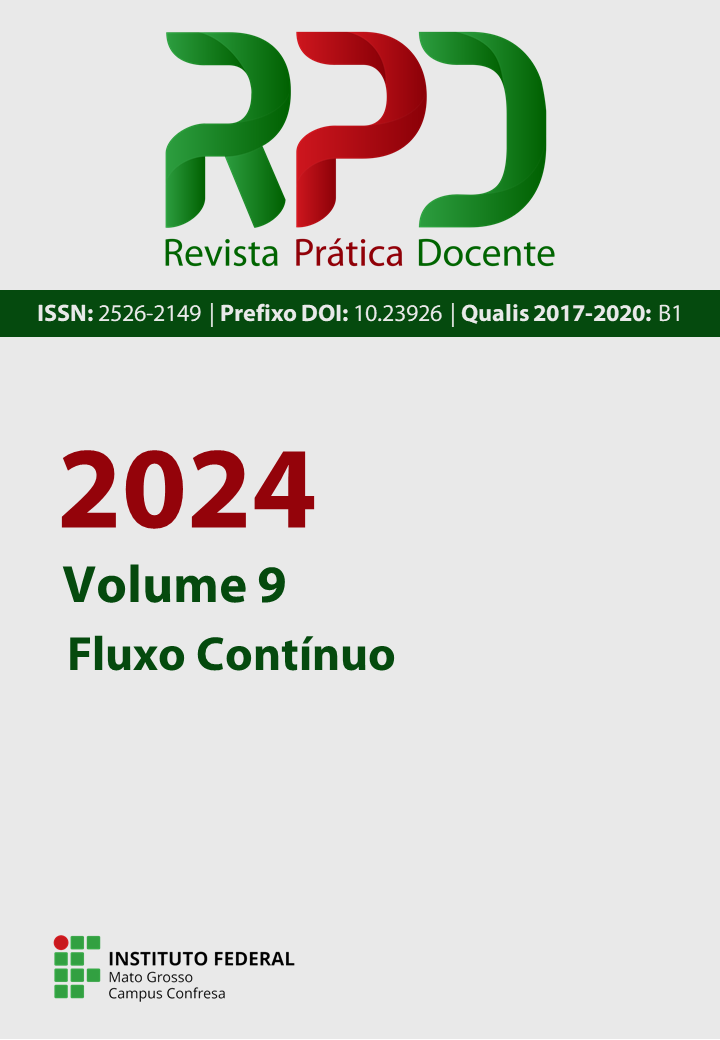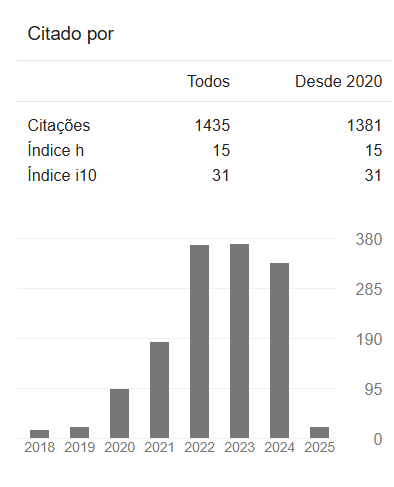Multiliteracy in Early Childhood Education: use of the 'Tablet Desk' in learning development
DOI:
10.23926/RPD.2024.v9.e24001.id669Keywords:
Early Childhood Education, Multiliteracy, Tablet desk, LearningAbstract
This article aims to examine the importance of multiliteracy in Early Childhood Education, focusing on the use of the "tablet table" as a technological tool and exploring how this perspective significantly impacts the learning process of children. Using a qualitative approach with a case study, the research seeks observed results in the school environment and analyzes the data through Bardin's Content Analysis (2016). The results highlight the interaction of children with the "tablet table" in the educational setting. It is concluded that it is feasible to promote a comprehensive teaching and learning process involving multiliteracy for student development. This approach emphasizes the importance of strategies that encourage autonomy, social interaction, creativity, and critical thinking, highlighting the effectiveness of introducing technologies such as the "tablet table" for new learning opportunities and knowledge construction.
Downloads
Metrics
References
BARDIN, Laurence. Análise de conteúdo. Tradução Luís Antero Reto, Augusto Pinheiro. São Paulo: Edições 70, 2016.
BRASIL. Constituição (1988). Constituição da República Federativa do Brasil. Brasília, DF: Senado Federal: Centro Gráfico, 1988.
BRASIL, ECA Estatuto da Criança e do Adolescente. Lei Federal n. 8069, de 13 de julho de 1990.
BRASIL. Lei de Diretrizes e Bases da Educação Nacional. LDB. 9394/1996.
BRASIL. Referencial Curricular Para a Educação Infantil. Vol. 1. Brasília: MEC/SEI, 1998.
BRASIL. Base Nacional Comum Curricular (BNCC). Educação é a Base. Brasília, MEC/CONSED/UNDIME, 2017.
FONSECA, J. J. S. Metodologia da pesquisa científica. Fortaleza: UEC, 2002. Apostila.
GATTI, Bernadete Angelina. Grupo focal na pesquisa em Ciências Sociais e Humanas. Brasília: Líber Livro, 2005.
GERHARDT, Tatiana Engel; SILVEIRA, Denise Tolfo (orgs). Métodos de Pesquisa. coordenado pela Universidade Aberta do Brasil – UAB/UFRGS e pelo Curso de Graduação Tecnológica – Planejamento e Gestão para o Desenvolvimento Rural da SEAD/UFRGS. – Porto Alegre: Editora da UFRGS, 2009.
GIL, Antonio Carlos. Como elaborar projetos de pesquisa. 4 ed. São Paulo: Atlas, 2002.
HORN, Maria da Graça de Souza. Sabores, cores, sons, aromas. A organização dos espaços na educação infantil. Porto Alegre: Artmed, 2004.
MALAGUZZI, Loris. As cem linguagens da criança. Porto Alegre: Artmed, 2015. Disponível em: https://www.educlub.com.br/as-cem-linguagens-da-crianca-poema-de-loris-malaguzzi/ acesso em 24/03/2023.
MINAYO, M. C. S. O desafio do conhecimento: pesquisa qualitativa em saúde. São Paulo: Hucitec/ABRASCO, 1992.
NANTES, Eliza Adriana Sheuer; GIRALDES, Maria Júlia Carneiro; DESIDERIO, Themis Farias de França; SILVEIRA, Ana Paula Pinheiro da. Ensino e Tecnologia: Diálogos Possíveis entre o Estágio Curricular Obrigatório e a Formação Discente. Revista Prática Docente, v. 3, n. 2, p. 720-739, jul/dez2018. http://dx.doi.org/10.23926/RPD.2526-2149.2018.v3.n2.p720-739.id135 acesso em 31/05/2023.
NÓVOA, Antônio. Formação de professores e trabalho pedagógico. Lisboa: Educa, 2002.
PRENSKY, M. Teaching Digital Natives: Partnering for Real Learning. Corwin Press, 2010.
ROJO, Roxane H. R. Pedagogia dos multiletramentos: diversidade cultural e de linguagem na escola. In: ROJO, Roxane Helena Rodrigues; MOURA, Eduardo (orgs). Multiletramentos na escola. São Paulo: Parábola Editorial, 2012.
SILVA, Andressa Hennig; FOSSÁ, Maria Ivete Trevisan. Análise de conteúdo: exemplo de aplicação da técnica para análise de dados qualitativos. Qualit@s Revista Eletrônica, ISSN 1677 4280, Vol.17. No 1, 2015. http://www.fei.am.gov.br/wp-content/uploads/2020/06/2113-7552-1-PB.pdf acesso em 27/03/2023.
SILVA, Fabiane Alves da; MAGALHÃES, Epaminondas de Matos. O gênero infográfico no desenvolvimento das habilidades de leitura e escrita, e multiletramento no ensino fundamental. Revista Prática Docente, v. 7, n. 3, e22080, 2022. http://doi.org/10.23926/RPD.2022.v7.n3.e22080.id1685 acesso em 31/05/2023.
VYGOTSKY, Lev Semyonovich. Aprendizagem e Desenvolvimento Intelectual na Idade Escolar: Linguagem, desenvolvimento e aprendizagem. São Paulo: Ícone, 1988.
Downloads
Published
How to Cite
Issue
Section
License
Copyright (c) 2024 A Revista Prática Docente tem o direito de primeira publicação

This work is licensed under a Creative Commons Attribution-NonCommercial 4.0 International License.
Authors who publish in this journal agree to the following terms:
- Authors retain the copyright and grant the journal the right of first publication, with the paper simultaneously licensed under the Licença Creative Commons Attribution allows the sharing of the work with acknowledgment of authorship and initial publication in this journal.
- Authors are authorized to take additional contracts separately, for non-exclusive distribution of the version of the work published in this journal (e.g. publish in institutional repository or as a book chapter), with acknowledgment of authorship and initial publication in this journal.











